This article was first published by Global Research in December 2015.
The literature on imperialism suffers from a fundamental confusion about the relationship between capitalism and imperialism. The aim of this paper is to remove this confusion. The paper is organised in three parts.
In Part I we state our own position of the capitalism-imperialism relation. In part II we discuss some major points at issue in the Marxist debate on imperialism. And in Part III we review the changing forms that imperialism has taken in Latin America in the course of the capitalist development process.
The main focus of the paper is on the form taken by imperialism in the current conjuncture of capitalist development, namely extractive capitalism. This conjuncture is characterised by the demise of neoliberalism as an economic model and a growing demand on the world market for energy, minerals and other “natural” resources—the political economy of natural resource development (large-scale investment in the acquisition of land and entailed resources, primary commodity exports). The fundamental dynamics of what we term “extractivist imperialism” are examined in the context of South America, which represents the most advanced but yet regressive form taken to date by capitalism in the new millennium. Our analysis of these dynamics is summarized in the form of twelve theses.
In this essay we are concerned with unravelling the intimate relation of imperialism to capitalism and clearing some confusion surrounding it. There are two major problems in the way these two concepts are often understood and used in the literature. In the liberal tradition of political science the projection of imperial power and associated dynamics are generally disconnected from capitalism and its economic dynamics, reducing imperialism to a quest for world domination based on a lust for power or purely geopolitical considerations by the guardians of the national interest in the most powerful countries. On the other hand, in the Marxist tradition of political economy, among world system theorists of the new imperialism there can be found the opposite tendency in which the institutional specificity of the state as an instrument of class power is ignored, and imperialism is reduced to a purely economic dynamic, essentially confusing imperialism with capitalism.
In this paper we argue that capitalism and imperialism are intimately connected but engage distinct dynamics in the geoeconomics and the geopolitics of capital that need to be clearly distinguished. We advance this argument in the Latin American context, with reference to the capitalist development process and associated dynamics in their temporal and spatial dimensions. But first we engage several points of dispute among Marxists in regard to imperialism. We then trace out the salient features of imperialism at various stages in the capitalist development process in Latin America.
The Marxist Debate on Imperialism: Points of Dispute
Almost all theories of contemporary imperialism, both in its (neo)Marxist and (neo)liberal variants, lack any but the crudest sociological analyses of the class and political character of the governing groups that direct the imperial state and its policies (Harvey 2003; Magdoff 2003; Amin 2001; Panitch and Leys 2004; Foster 2006; Hardt and Negri 2000). The same is true for contemporary theorizing about the imperial state, which is largely devoid of both institutional and class analysis.[1] Most theorists of imperialism resort to a form of economic reductionism in which the political and ideological dimensions of imperial power are downplayed or ignored, and categories such as “investments,” “trade” and “markets” are decontextualized and presented as historically disembodied entities that are comparable across space and time. Changes in the configuration of class relations and associated dynamics are then accounted for in terms of general economic categories such as “finance,” “manufacturing,” “banking” and “services” without any analysis of the political economy of capitalist development and class formation, or the nature and sources of financial wealth—illegal drug trade, money laundering, real estate speculation, etc. (Panitch and Leys 2004). As for the shifts in the political and economic orientation of governing capitalist politicians representing the imperial interests of the dominant class, resulting in the formation of links with other capitalists and imperialist centres with major consequences in the configuration of world power, they are glossed over in favour of abstract accounts of statistical shifts in economic measures of capital flows.
Contemporary theorizing about imperialism generally ignores the sociopolitical and ideological power configurations of imperial policy, as well as the role of international financial institutions such as the World Bank in shaping the institutional and policy framework of the new world order, which not only provides a system of global governance but the rules of engagement for the class war launched by the global capitalist class against labour in its different redoubts of organised resistance. The focus of most contemporary and recent studies of the dynamics of imperial power is on the projection of military power in the project of protecting and advancing the geopolitical interests of the United States and the geo-economic interests of monopoly capital in the middle east and other zones of capital accumulation, or on the economic operations of the large multinational corporations that dominate the global economy. In regard to the Middle East the main issue in these studies is the threat presented by radical Islam (and its forces of international terrorism) to accessing one of the world’s greatest reservoirs of fossil fuel as well as the imperialist project of world domination.
As for the multinational corporations that dominate the global economy they are viewed by theorists of the “new imperialism” as the major operational agency of imperial power in the world capitalist system, having displaced the nation-state in its power to advance the project of capital accumulation and the quest for world domination. While theorists and analysts in the liberal tradition continue their concern with the dynamics US foreign policy in the projection of imperial power, and Marxists in the tradition of international political economy and critical development studies continue to concentrate their analysis on the dynamics of state power, the theorists of the “new imperialism” concentrate almost entirely on the globalizing dynamics of monopoly capital.
Nevertheless, the dynamics of imperial power relations are political as well as economic, and do engage the political apparatus of the state. As for the economic dynamics, as theorized by Lenin in a very different context, they derive from the search by capital for profit and productive investments as well as cheaper sources of raw materials and labour and markets. In terms of these dynamics, particularly those that relate to the fusion of industrial and financial capital, the export of capital and the emergence of monopoly capital, Lenin theorized imperialism as the highest form of capitalism, a manifestation of its fundamental laws of development. However, while liberal theorists of imperialism tend to emphasize the political, and to isolate the political dimension of imperialism from its economic dynamics, viewing imperialism purely in terms of the quest for world domination or the pursuit of geopolitical strategic concerns and the national interest, Marxist theorists following Lenin recognize that the imperial state is a critical agency of capitalist development and a fundamental source of political and military power pursued in the service of capital, to ensure its dominion.[2]
From this Marxist perspective imperialism is understood in terms of its connection to capitalism, and the agency of the imperial state system—the projection of state power—in securing the conditions needed for capital accumulation. Not that there is a consensus on this point—on imperialism as the bearer of capital, an agency of capitalist development. William Robinson, for example, expands on the argument advanced by Hardt and Negri (2000) and other world system theorists that the “class relations of global capitalism are now so deeply internalized within every nation-state that the classical image of imperialism as a relation of external domination is outdated” (Robinson 2007, 7).[3] Although what these class relations might possibly be is unclear, as is the question as to what form imperialism takes under these circumstances (the dominion of capital over labour?), Robinson argues that in effect “national capitalist monopolies” no longer need to
“turn to the state for assistance . . . .” The corollary is that the state no longer needs to assume the responsibility for empire-building and the projection of imperial power is no longer concerned with the dynamics of capital accumulation.[4] In Robinson’s formulation “the system of nation-states . . . is no longer the organizing principle of capitalist development, or the primary institutional framework that shapes social and class forces and political dynamics” (Robinson 2007, 8).
Another assumption made by Robinson and shared by other world system theorists of transnational capital and “globally integrated enterprise” is that “if we are to get at the root of 21st century global social and political dynamics” the Marxist tradition of imperialism theory based on the classical statements of Lenin and Hilferding should be discarded. Based on the assumption of a world of rival national capitals and economies, conflict among core capitalist powers, the exploitation by these powers of peripheral regions, and “a nation-state centred framework for analysing global dynamics,” this theoretical tradition is entirely useless, incapable—according to Robinson—of grasping the fundamental contemporary dynamics of capitalist development (Robinson 2007, 6–7).[5]
If, as Robinson contends, capital no longer needs the imperial state does it mean that imperialism will wither away, or does it mean, as argued by Klare (2003, 51–52), that it will take the form of
“geopolitical competition . . . the contention between great powers and aspiring great powers for control over territory, resources, and important geographical positions such as ports and harbours . . . and other sources of wealth and influence.”
Or does it mean what Robinson and some—including Amin (2001), Arrighi (2005), Foster (2003) and others in the torrent of “new imperialism” literature that has appeared since 2001—have suggested or contend, namely that imperialism is advanced primarily, if not exclusively, in economic form via the agency of transnational(ized) corporations that represent an empire without imperialism, as Hardt and Negri would have it, or capitalism beyond imperialism, as Robinson sees it.
In opposition to this rather reductionist view of imperialism, we hold that imperial power is shaped predominantly by the imperial state and its policies that take as a given that what is perceived as in the “national interest” coincides with the concerns and interests, both economic and political, of the capitalist class—or the “private sector,” in the official discourse. Notwithstanding arguments to the contrary, and taking into consideration both its economic and political dynamics and its actual operations (investments, production, sales), imperialism now as before is clearly designed and works to advance the project of capital accumulation in whatever and in as many ways as possible—to penetrate existing and open up new markets, exploit labour as humanely as possible but as inhumanely as needed, extract surplus value from the direct producers where possible, and access as needed or process raw materials and minerals.
Insofar as the capitalist class is concerned the aim and the agenda of its individual and institutional members is to accumulate capital. As for the imperial state and its agents and agencies, including the World Bank and the agencies of international cooperation for security and development, the agenda is merely to pave the way for capital, to create the conditions needed for economic and social development. In neither case is uneven development of the forces of production and its social conditions (social inequality, unemployment, poverty, social and environmental degradation, etc.) on the agenda. Rather, these conditions are the unintended or “structural” consequences of capitalist development, and as such inevitable and acceptable costs of progress that need to be managed and, if and where possible, mitigated in the interest of both security and development.
Under these strategic and structural conditions it is illuminating but not particularly useful to measure the impact of imperialism merely in economic terms of the volume of capital inflows (FDI, bank loans, portfolio investments, etc.) and outflows (profit, interest payments, etc.).[6] This is because imperialism is a matter of class and state power, and as such an issue of politics and political economy—issues that are not brought into focus in an analysis of national accounts. At issue here are not only the structural dynamics of uneven capitalist development (the “development of underdevelopment,” in André Gunder Frank’s formulation) but social and international relations of power and competition between imperial and domestic classes, between officials and representatives of the imperial state and the state in “emerging economies” and “developing societies.”
Under current conditions of rapid economic growth and capitalist development on the southern periphery of the world system, these relations are very dynamic and changing. By no means can they be described today as relations of domination and subordination. In addition, members of the global ruling class (investors, financiers, big bankers, industrialists, etc.) must compete with each other not only in the same sector but in different countries within the world capitalist and imperialist system. This is not only a question of inter-capitalist and intra-imperialist rivalry. It is also a development and political issue embedded in the social structure of the capital-labour relation and the economic structure of international relations within the world system. For example, within the dynamic and changing structure of this complex system of class and international relations officials of the states with a subordinate position in the imperial state system will insist on the transfer of technological, management and marketing knowhow to strengthen the ability of their capitalists to compete and for them to make profit, extract rents and serve their “national interest.”
As for relations of “domination” and “dependence” among nations on the lines of a north-south divide the structure of global production, and international relations of domination and subordination, are dynamic and change over time, in part because the geopolitical and economic concerns of the nation-state subject to imperial power leads to a quest for relative autonomy by state officials and politicians in these countries as well as protection of the national interest. “Developments” along these lines have resulted in qualitative changes in the relations between established imperial and emerging capitalist states.[7] Therefore, theorizing that is focused only on an analysis of inflows and outflows of capital—as if the “host” country was a “blank factor”—or a focus on the structure of global production based on a fixed international division of labour, cannot account for the dynamics of capitalist development in countries and regions on the periphery of the system with those at the centre.[8] Nor can this type of economistic theorizing explain dynamic features of the world capitalist system, for example the shift in economic power from North America and Western Europe towards Asia—China and India, to be precise.
Capitalist Development, Class Struggle and Imperialism
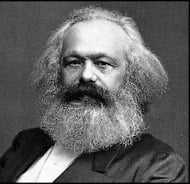 In outlining his conception of Historical Materialism, the foundation of Marxism as a social science, Marx had argued that at each stage in the capitalist development process[9]—the development of the forces of production—can be found a corresponding system of class relations and struggle. For Marx this was a matter of fundamental principle arising out of a fundamental conflict between the forces and relations of production. But he could have added that at each stage of capitalist development can also be found both a corresponding and distinct form of class struggle based on the forces of resistance to this advance, as well as imperialism in one form or the other and distinctly understood as the projection of state power in the service of capital—to facilitate its advance in the sphere of international relations and secure its evolution into and as a world system. That is, the projection of state power in the quest for world domination—to establish hegemony over the world system—is a necessary condition of capitalist development. Capitalism requires the state not only to establish the necessary conditions of a capital accumulation process, but to ensure its inevitable expansion—the extension of the capital-labour relation, and its mechanism of economic exploitation (the extraction of surplus value from the labour of the direct producers)—into a world system.
In outlining his conception of Historical Materialism, the foundation of Marxism as a social science, Marx had argued that at each stage in the capitalist development process[9]—the development of the forces of production—can be found a corresponding system of class relations and struggle. For Marx this was a matter of fundamental principle arising out of a fundamental conflict between the forces and relations of production. But he could have added that at each stage of capitalist development can also be found both a corresponding and distinct form of class struggle based on the forces of resistance to this advance, as well as imperialism in one form or the other and distinctly understood as the projection of state power in the service of capital—to facilitate its advance in the sphere of international relations and secure its evolution into and as a world system. That is, the projection of state power in the quest for world domination—to establish hegemony over the world system—is a necessary condition of capitalist development. Capitalism requires the state not only to establish the necessary conditions of a capital accumulation process, but to ensure its inevitable expansion—the extension of the capital-labour relation, and its mechanism of economic exploitation (the extraction of surplus value from the labour of the direct producers)—into a world system.
Lenin had theorised this projection of state power in the service of capital as the most advanced stage in the capitalist development process, which includes a phase of “primitive accumulation” (in which the direct producers are separated from the land and their means of production) and a process by which the small-landholding agricultural producers or peasant farmers are proletarianized, converted and made over into a working class. As Lenin saw it imperialism so conceived (as the “highest stage of capitalism”) featured
(i) the fusion of industrial and financial capital;
(ii) the export of capital in the search for profitable outlets overseas;
(iii) the territorial division (and colonization) of the world by European capitalist powers within the institutional and policy framework of Pox Britannica (the hegemony and dominion of the United States); and
(iv) an international division of labour based on an international exchange of primary commodities for goods manufactured in the centre of the system. These features encompassed an economic dynamic of capital accumulation, but this dynamic and the economic structure of this system evidently required and was secured politically with the projection of state power, including military force.
Lenin astutely identified the fundamental structural features of the world capitalist system at this stage of development. However, it was misleading to characterise it as “imperialism” in that the projection of imperial class-based state power was a distinct feature of capitalism in an earlier phase in the evolution of capitalism as a world system, namely mercantilism, a system in which merchant’s capital was accumulated through the expropriation of natural resources as much as exploitation of labour as well as state-sanctioned and regulated international trade. And imperialism was also a distinct feature and an adjunct to the capital accumulation process in later periods of capitalist development, as discussed below.
Imperialism in an Era of State-led Capitalist Development (1950–80)
In the wake of the Second World War the United States emerged as an economic super-power, in command of at least one half of world industrial capacity and up to 80 percent of financial resources or capital for productive investment. Having replaced Great Britain as the leader of what were then described as the “forces of (economic and political) freedom,” and to counter a perceived potential threat from its Russian war-time ally, now the USSR, which had also emerged from the war as an industrial power but representing an alternative socialist system for expanding the forces of national production, the US led the construction of a capitalist world order in the form of the Bretton Woods system (Bienefeld 2013; Frieden 2006; Peet 2003).
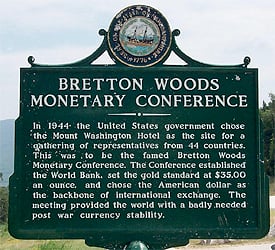 This system included two “international financial institutions”—the International Monetary Fund (IMF) and what would become the World Bank—as well as a General Agreement on Tariffs and Trade (GATT), an institutional mechanism for negotiating agreements in the direction of free trade that would eventually emerge as the World Trade Organisation (WTO). This system provided a set of rules used to govern relations of international trade—rules that favoured the operations and expansion of what had emerged as a complex of predominantly US-based multinational corporations and thus the hegemony of US capital. However, it also provided the institutional framework of a project of international cooperation with the nation-building and development efforts of a large number of countries that were engaged in a war of national liberation and independence from the colonial powers that had subjugated them for so long.
This system included two “international financial institutions”—the International Monetary Fund (IMF) and what would become the World Bank—as well as a General Agreement on Tariffs and Trade (GATT), an institutional mechanism for negotiating agreements in the direction of free trade that would eventually emerge as the World Trade Organisation (WTO). This system provided a set of rules used to govern relations of international trade—rules that favoured the operations and expansion of what had emerged as a complex of predominantly US-based multinational corporations and thus the hegemony of US capital. However, it also provided the institutional framework of a project of international cooperation with the nation-building and development efforts of a large number of countries that were engaged in a war of national liberation and independence from the colonial powers that had subjugated them for so long.
In this context capitalism engaged a process of productive and social transformation—the transformation of an economic system based on agriculture and an agrarian society and social system based on pre-capitalist relations of production into a modern industrial capitalist system based on capitalist relations of production, or wage labour.[10] The basic mechanism of this transformation was exploitation of the “unlimited supply of surplus rural labour” released in the capitalist development of the forces of production in the agricultural sector (Lewis 1954).
This process of capitalist development, and the associated process of productive and social transformation, can be traced out in different countries and regions at different points of time. But the process unfolded in different ways, engaging different forces of change and resistance in the class struggle, in the countries at the centre of the system and those on the periphery. First, in peripheral regions (Latin America and the Caribbean, parts of Asia and Africa) were found countries that were struggling to escape colonial subjugation and imperialist exploitation as well as class rule. Governments in these countries were in a position to choose between a capitalist and a socialist path towards nation-building and economic development, a situation that called for a strategic and political response from the guardians of the capitalist world order.
The response: to assist the development process in these countries—for the states in the developed countries and the international organizations and financial institutions to provide technical and financial assistance (foreign aid, in the lexicon of international development) to the undeveloped and less developed countries on the periphery of the system. In this context it is possible to view the idea and the entire enterprise of international development through the lens of imperialist theory—as a distinct form of imperialism (Petras and Veltmeyer 2005a; Veltmeyer 2005).
There is considerable evidence to suggest that the most powerful states within the institutional framework and system what can now be described as Pax Americana (the hegemony and dominion of the United States) in the post-war era of capitalism began to deploy the idea of development as a means of facilitating the entry into and the operations of capital in peripheral countries…in the development of their forces of production and the accumulation of capital in the process. In this context diplomatic pressure and military force were deployed as required or dictated by circumstance, but only secondarily, i.e., as a strategy and tactic of last resort. Thus the projection of military force to achieve the geopolitical objectives of the imperial state used predominantly by the US state in the 1950s and early 60s to maintain imperial order in its backyard—Guatemala (1954), Cuba (1961), the Dominican Republic (1963, 1965), Brazil (1964), Guyana (1953) and Chile (1973).[11]
 After the military coup engineered in Chile this strategy of direct military invention and sponsored military coups gave way to a war by proxy, which entailed the financing of both the policy-making apparatus re social and development programs and the repressive apparatus (the armed forces) deployed by its Latin American allies.
After the military coup engineered in Chile this strategy of direct military invention and sponsored military coups gave way to a war by proxy, which entailed the financing of both the policy-making apparatus re social and development programs and the repressive apparatus (the armed forces) deployed by its Latin American allies.
In the same way as the imperialist project of International Cooperation for Development was used in the 1950s and subsequently to discourage those countries seeking to liberate themselves from the yoke of colonialism from turning towards a socialist path towards national development, the US government as an imperialist state resorted to the idea of “development” as a means of preventing another “Cuba” and turning the “rural poor” away from the option of revolutionary change provided by the revolutionary movements that had emerged in Latin America (Petras and Veltmeyer 2007a).
The class struggle at the time (the 1950–60s) assumed two main forms. The first was as a land struggle waged by the peasantry, most of which had been either proletarianized (rendered landless) or semi-proletarianized (forced to take the labour path out of rural poverty).[12] Many of the proletarianized and impoverished peasants, separated from their means of production and livelihoods, chose to migrate and take the development path of labour staked out by the World Bank (2008) and the modernization theorists of “development.”
 However, many others chose to resist rather than adjust to the forces of capitalist development operating on them, to join the revolutionary social movements in the form of “armies of national liberation”. But by means of a three-pronged strategy and policy of (i) land reform (expropriation and redistributing land to the tiller), (ii) integrated rural development (technical and financial assistance to the small landholding peasant or family farmer), and (iii) repression (use of the iron fist of armed force hidden within the velvet glove of integrated development) the imperial state, via its allies in the local states, managed to defeat or “bring to ground” the social movements engaged in the land struggle. The one exception was the Revolutionary Armed Forces of Colombia (FARC), which continues to be a powerful force of resistance against the incursions of capital in Colombia to this today.
However, many others chose to resist rather than adjust to the forces of capitalist development operating on them, to join the revolutionary social movements in the form of “armies of national liberation”. But by means of a three-pronged strategy and policy of (i) land reform (expropriation and redistributing land to the tiller), (ii) integrated rural development (technical and financial assistance to the small landholding peasant or family farmer), and (iii) repression (use of the iron fist of armed force hidden within the velvet glove of integrated development) the imperial state, via its allies in the local states, managed to defeat or “bring to ground” the social movements engaged in the land struggle. The one exception was the Revolutionary Armed Forces of Colombia (FARC), which continues to be a powerful force of resistance against the incursions of capital in Colombia to this today.
The second major form of the class struggle at the time had to do with the capital-labour relation, and engaged the working class in an organised labour movement against capital and the state for higher wages and improved working conditions. This struggle was part of a global class war launched by capital in the 1970s in the context of a systemic crisis of overproduction (Crouch and Pizzorno 1978). One of a number of weapons deployed in this war was the power of the state, via its policymaking role, to fatally weaken the labour movement in its organizational capacity to negotiate collective contracts for higher wages and reduce the share of labour in national incomes.
This approach was particularly effective in Latin America, where the imperial state, via the international organisations and financial institutions at its command, was in a position to impose market-friendly “structural” reforms on the labour movement. As a result of these reforms in the capital-labour relation the share of labour (wages) in the distribution of national income in many Latin American countries was reduced by as much as 50 percent.[13] The purchasing power of the average wage in Argentina, for example, was less in 2010—after six years of economic recovery and export-led rapid economic growth—than it was in 1970. The loss in the purchasing power or value of wages was particularly sharp at the level of the government-regulated minimum wage, which the World Bank throughout the 1980s and 1990s tirelessly argued was the major cause of low income, poverty and informalisation in the region. For example, in Mexico, the country that followed the strictures of Washington and the World Bank in regard to deregulating the labour market, from 1980 to 2010, over three decade of neoliberalism, the minimum wage lost up to 77 percent of its value (Romero 2014).
While the imperial state was indirectly engaged in the land struggle via a program of international cooperation that was implemented by the Latin American state but financed by officials of the imperial state, imperialism vis-à-vis the labour movement took the form of an armed struggle against “subversives” (a broad urban coalition of forces of resistance mobilised by the “political left”).
The struggle was led by the armed forces of the Latin American state, particularly in Brazil and the southern cone of south America (Chile, Bolivia, Argentina, Uruguay), although financed by and (indirectly) under the strategic command of the US, and operating within the framework of an ideology and doctrine (the National Security Doctrine) fabricated within the ideological apparatus of the imperial state. By the end of the 1970s this movement had also suffered defeat, its forces in disarray and disarticulated under the combined weight of state repression and forces generated in the capitalist development process. With the defeat of both major fronts of the class struggle and popular movement, with the resurgence of the Right in the form of a counterrevolutionary political movement and an ideology of free market capitalism, the stage was set for a major turnaround in the correlation of opposing forces in the class struggle. Imperialism would have an important role to play in this process.
Imperialism and Capitalism in an Era of Neoliberal Globalization (1980–2000)
Neoliberalism as an ideology of free market capitalism and a doctrine of policy reform in the direction of free market capitalism—“the new economic model,” as it was termed in Latin America (Bulmer-Thomas, 2006)—was some four decades in the making, manufactured by a neoliberal thought collective put together by Van der Hayek (Mirowski and Plehwe 2009). It was not until the early 1980s that the necessary conditions for bringing these ideologues to state power, i.e., in a position to influence and dictate policy, were available or otherwise created. These conditions included an unresolved systemic crisis of overproduction, a fiscal crisis in the North and an impending debt crisis in the South, and the defeat of the popular movement in the class struggle over land and labour.
Under these conditions the imperial state, via its international organizations and financial institutions, mobilized its diverse powers and forces so as to mobilize the forces needed to reactivate the capital accumulation process. The main problem here—from a capitalist and imperialist perspective—was how to liberate the “forces of freedom” (to quote from George W. Bush’s 2012 National Security Report) from the regulatory constraints of the welfare-development state. The solution: a program of “structural reform” in macroeconomic policy (the vaunted structural adjustment program” constructed by economists at the World Bank and the IMF) within the framework of a Washington Consensus (Williamson 1990).
By 1990 all but four major Latin American states had succumbed or joined the Washington Consensus in regard to a program that was imposed on them as a conditionality of aid and access to capital markets to renegotiate the external debt. And in the 1990s, in a third cycle and generation of neoliberal reforms,[14] the governing neoliberal regimes in three of these states—Argentina, Brazil, Peru—had followed suit, generating conditions that would facilitate a massive inflow of productive capital in the form of Foreign Direct Investment (FDI) as well as a substantial inflow of unproductive or fictitious capital seeking to purchase the assets of existing lucrative but privatised state enterprises (Petras and Veltmeyer 2004).
What followed was what has been described as the “Golden Age of US Imperialism” (viz. the facilitated entry and productive operations of large-scale profit- and market-seeking investment capital), as well as the formation of powerful peasant and indigenous social movements to resist the neoliberal policy offensive and protest the destructive impact of neoliberal policies on their livelihoods and communities—movements no longer directed against the big landlords or corporate capital and agribusiness but against the policies of the local and imperial state (Petras and Veltmeyer 2005a, 2009, 2013). By the end of the decade these movements had successfully challenged the hegemony of neoliberalism in the region as an economic model and policy agenda. What resulted was a “red” and “pink” tide of regime change—a turn to the left in national politics and the formation of regimes oriented towards the “socialism of the 21st century (Venezuela, Bolivia, Ecuador) or a post-Washington consensus on the need for a more inclusive form of development—inclusionary state activism (Argentina, Brazil, Chile, Uruguay . . .).[15] The states formed in the so-called “red wave” of regime change constituted a new anti-imperialist front in the struggle against US imperialist intervention—another front to the one formed by the social movements in their resistance and direct action.
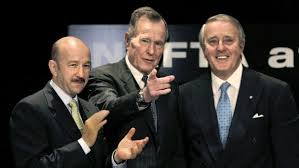
Salinas de Gortiari, Bush Senior, Mulroney
At the level of national politics the main issues was US intervention in Latin America affairs, including the funding of opposition groups in Venezuela, the economic blockade against Cuba, and the attempt by the US government to orchestrate a free trade agreement, first between the US and both Canada and Mexico, and then a continent-wide agreement (FTAA, or ALCA in its Spanish acronym). The US regime was successful in the first instance, but failed miserably in the second—having encountered powerful forces of resistance in the popular sector of many states, as well as widespread opposition within the political class and elements of the ruling class and the governing regime in countries such as Brazil.
Both imperialism and the anti-imperialist struggle in this conjuncture of capitalist development assumed different forms in different countries, but Colombia was unique in that the most powerful movement in the 1960s land struggle had never been defeated. With land still at the centre of the class struggle the existence and large-scale operations of what we might term narcocapitalism allowed the US imperial state to move with armed force against the major remaining obstacle to the capitalist development of agriculture in Colombia—to make the countryside safe for US capital—under the façade of a drug war waged by the government against the manufacturers of cocaine and the narco-trafficking. The mechanism of this imperial offensive was Plan Colombia, a US military and diplomatic aid initiative aimed at combating Colombian drug cartels and left-wing insurgent groups in Colombian territory. The plan was originally conceived between 1998 and 1999 by the administrations of Colombian President Andrés Pastrana Arango and US President Bill Clinton, as an anti-cocaine strategy but with the aim of ending the Colombian armed conflict and making the countryside safe for US capital (Vilar and Cottle 2011).
A third front in the imperialist offensive against the forces of resistance in the popular sector involved International cooperation and the agencies of international development. The strategy employed by these agencies was the same as successfully used in the 1960s and 1970s to dampen the fires of revolutionary ferment in the countryside: to offer the dispossessed peasants and the rural poor a non-confrontational alternative to social mobilization and direct collective action (Veltmeyer 2005). The strategy had a different outcome in different countries.
In Ecuador, home to the most powerful indigenous movement in the region—the Confederation of Indigenous Nationalities of Ecuador (CONAIE)—the strategy of ethnodevelopment orchestrated by the World Bank and the IDB resulted in dividing and weakening the movement, undermining its capacity to mobilise the forces of popular resistance (Petras and Veltmeyer 2009). For example, in just a few years Antonio Vargas, President of CONAIE and leader of the major indigenous uprising of the twentieth century, had been converted into the head of one of the most powerful NGOs in the region, with the capacity to disburse funds for local development microprojects and a resulting diminution in the power of CONAIE to mobilise the forces of resistance. By 2007, when Rafael Correa, a left-leaning economist, came to power as the country’s president, the indigenous movement led by CONAIE, was but a shadow of its former self, allowing the political left, in the form of Correa’s Citizens Movement, to push CONAIE and the indigenous movement aside in the political project of a “Citizen’s Revolution.”
The outcome was rather different in Bolivia, a paradigmatic case of anti-neoliberalism and anti-imperialism in the current conjuncture of the class struggle. Whereas the popular movement in Ecuador had been pushed aside in the capture of the instruments of state power by the Political Left, in Bolivia an extended process of class conflict and mass mobilization was the prelude and condition of the Political Left’s rise to power in the form of the Movement Towards Socialism (MAS). The water and gas “wars”, clashes with the military, and the dismissal of several corrupt and neoliberal governments, were all part of a cocktail that allowed for the emergence of a new political “actor” or instrument in the form of MAS, and the rise to power of Evo Morales, which was backed by the “social movements”—that encompassed both communities of indigenous “peasants,” a rural proletariat of landless workers, and diverse sectors of the organised working class (Dangl 2007; Farthing and Kohl 2006; Webber 2010).
Imperialism and Anti–Imperialism in an Era of Extractive Capitalism
The neoliberal “structural reform” agenda of the Washington Consensus facilitated a massive inflow of capital in the form of foreign direct investments directed towards non-traditional manufacturing, financial and high-tech information-rich services, and natural resource extraction. The 1990s saw a six-fold increase in the inflows of FDI in the first four years of the decade and then another sharp increase from 1996 to 2001; in fewer than ten years the foreign capital accumulated by MNCs in the region had tripled (ECLAC 2012, 71) while profits soared. John Saxe-Fernandez, a well-known Mexico-based political economist, determined that over the course of the decade that the inflow of FDI had netted enormous profits, reflected in the net outflow of US$100 billion over the entire decade of (Saxe-Fernández and Núñez 2001).
Another major inflow occurred in the first decade of the new millennium in the context of a major expansion in the worldwide demand for natural resources and a consequent primary commodities boom in South America (Ocampo 2007). As shown by data presented in Table 1 this boom in the export of primary commodities in the energy sector of fossil and bio-fuels (oil and gas), as well as minerals and metals, and agrofood products primarily affected South America, which led a worldwide trend towards the (re)primarization of exports from the periphery of the system and the expansion of extractive capitalism.
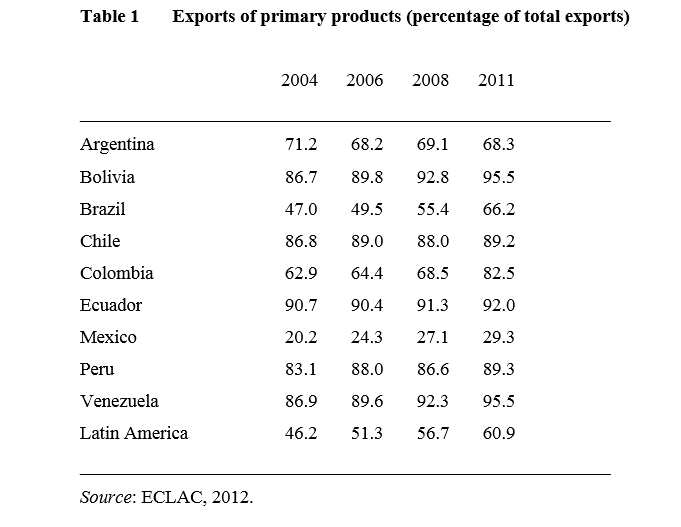
The main targets and destination points for FDI in Latin America over the past two decades have been services (particularly banking and finance) and the natural resources sector: the exploration, extraction, and exploitation of fossil and biofuel sources of energy, precious metals and industrial minerals, and agrofood products. In the previous era of state-led development FDI had predominantly served as a means of financing the capitalist development of industry and a process of “productive transformation” (technological conversion and modernization), which was reflected in the geoeconomics of global capital and the dynamics of capital flows at the time. However, the new world order and two generations of neoliberal reforms dramatically improved conditions for capital, opening up in Latin America the market for goods manufactured in the North (the United States, Canada, and Europe) and providing greater opportunities for resource-seeking capital—consolidating the role of Latin America as a source and supplier of natural resources and exporter of primary commodities, a role that is reflected in the flows of productive investment in the region away towards the extractive industries (see Table 2).
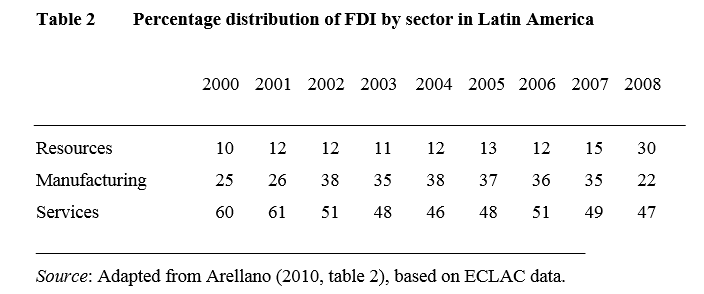
At the turn into the new millennium the service sector accounted for almost half of FDI inflows, but data presented by ECLAC (2012, 50) point towards a steady and increasing flow of capital towards the natural resources sector in South America, especially mining, where Canadian capital took a predominant position, accounting for up to 70 percent of FDI in this sector (Arellano 2010). Over the course of the first decade in the new millennium the share of “resource seeking” capital in total FDI increased from 10 to 30 percent. In 2006 the inflow of “resource-seeking” investment capital grew by 49 percent to reach 59 billion US dollars, which exceeded the total FDI inflows of any year since economic liberalization began in the 1990s (UNCTAD 2007: 53).
Despite the global financial and economic crisis at the time, FDI flows towards Latin America and the Caribbean reached a record high in 2008 (128.3 billion US dollars), an extraordinary development considering that FDI flows worldwide at the time had shrunk by at least 15 percent. This countercyclical trend signalled the continuation of the primary commodities boom and the steady expansion of resource-seeking capital in the region.
The rapid expansion in the flow of FDI towards Latin America in the 1990s reflected the increased opportunities for capital accumulation provided by the neoliberal policy regimes in the region, but in the new millennium conditions for capitalist development had radically changed. In this new context, which included a major realignment of economic power and relations of trade in the world market, and the growth in both the demand for and the prices of primary commodities, the shift of FDI towards Latin America signified a major change in the geo-economics and geopolitics of global capital. Flows of FDI into Latin America from 2000 to 2007 for the first time exceeded those that went to America, only surpassed by Europe and Asia. And the global financial crisis brought about an even more radical change in the geo-economics of global capital in regard to both its regional distribution (increased flows to Latin America) and sectoral distribution (concentration in the extractive sector). In 2005, the “developing” and “emerging” economies attracted only 12 percent of global flows of productive capital but by 2010, against a background of a sharp decline in these flows, these economies were the destination point for over 50 percent of global FDI flows (CEPAL 2012. In the same year FDI flows into Latin America increased by 34.6 percent, well above the growth rate in Asia, which was only 6.7 percent (UNCTAD 2012: 52-54).
The flow of productive capital into Latin America has been fuelled by two factors: high prices for primary commodities, which attracted “natural-resource-seeking investment”, and the economic growth of the South American sub-region, which encouraged market-seeking investment. This flow of FDI was concentrated in four South American countries—Argentina, Brazil, Chile, and Colombia—which accounted for 89 percent of the sub-region’s total inflows. The extractive industry in these countries, particularly mining, absorbed the greatest share of these inflows. For example, in 2009, Latin America received 26 percent of global investments in mineral exploration (Sena-Fobomade 2011). Together with the expansion of oil and gas projects, mineral extraction constitutes the single most important source of export revenues for most countries in the region.
The Geopolitics of Capital in Latin America: The Dynamics of Extractive Imperialism
As noted, a wave of resource-seeking FDI was a major feature of the political economy of global capitalist development at the turn into the first decade of the new millennium. Another was the demise of neoliberalism as an economic doctrine and model—at least in South America, where powerful social movements successfully challenged this model. Over the past decade a number of governments in this sub-region, in riding a wave of anti-neoliberal sentiment generated by these movements experienced a process of regime change—a tilt towards the left and what has been described as “progressive extractivism” (Gudynas 2010).
The political victories of these democratically elected “progressive” regimes opened a new chapter in the class struggle and the anti-imperialist movement, notwithstanding the fact that the wide embrace of resource-seeking FDI, or extractive capital, has generated deep paradoxes for those progressive regimes in the region committed to addressing the inequality predicament and conditions of environmental degradation that are fast reaching crisis proportions as a result of the operations of extractive capital.
Some political leaders and social movements in this context speak of revolution in the context of moving towards “the socialism of the 21st century—Venezuela’s “Bolivarian” revolution, Bolivia’s “democratic and cultural revolution,” and Ecuador’s “citizens’ revolution”—and, together with several governments that have embraced the new developmentalism (the search for a more inclusive form of development), these regimes have indeed taken some steps in the direction of poverty reduction and social inclusion, using the additional fiscal revenues derived from resource rents to this purpose. Yet, like their more conservative neighbours—regimes such as Mexico and Colombia, committed to both neoliberalism and an alliance with “imperialism”—the left-leaning progressive regimes in the region find themselves entangled in a maze of renewed dependence on natural resource extraction (the “new extractivism”) and primary commodity exports (“reprimarization”). Further, as argued by Gudynas (2010), this new “progressive” extractivism is much like the old “classical” extractivism in its destruction of both the environment and livelihoods, and its erosion of the territorial rights and sovereignty of indigenous communities most directly affected by the operations of extractive capital, which continues to generate relations of intense social conflict.[16]
Despite the use by “progressive” centre-left governments of resource rents as a mechanism of social inclusion and direct cash transfers to the poor, it is not clear whether they are able to pursue revolutionary measures in their efforts to bring about a more inclusive and sustainable form of development, or a deepening of political and economic democratization, allowing the people to “live well”, while at the same time continuing to toe the line of extractive capital and its global assault on nature and livelihoods. The problem here is twofold. One is a continuing reliance of these left-leaning post-neoliberal regimes (indeed, all but Venezuela) on neoliberalism (“structural reforms”) at the level of macroeconomic public policy. The other problem relates to the so-called “new extractivism” based on “inclusionary state activism” as well as the continued reliance on FDI—and thus the need to strike a deal with global capital in regard to sharing the resource rents derived from the extraction process. The problem here is that in this relation of global capital to the local state the former is dominant and has the power, which is reflected in the tendency of the governments and policy regimes formed by the new Latin American Left, even those like Ecuador and Peru that have taken a “radical populist form,” to take the side of global capital (the multinational mining companies) in their relation of conflict with the communities that are directly affected by the extractive operations of these companies (see the various country case studies in Veltmeyer and Petras 2014).
Another indicator of the relation of dependency between global extractive capital and the Latin American state is the inability of the latter to regulate the former and the extraordinary profits that are made by the companies that operate in the extractive sector. It is estimated that given very low or, as in the case of Mexico, non-existent royalty rates and the typically lax and low tax regime on the exportation of minerals and minerals—a major factor in the export regime of a number of countries in the region (particularly Chile, Bolivia, Colombia, Peru) —over 70 percent of the value of these minerals and metals on the global market is appropriated by different groups of capitalists in the global production chain. For example, Financial Times reported on April 18, 2013 that from 2002 to 2008, during the height of the primary commodities boom, the biggest commodity traders harvested 250 billion US dollars in profits on their “investments.”[17]
At the same time, given the capital intensity of production in the extractive sector it is estimated that workers generally received less than ten percent of the value of the extracted resources. Typically, the benefits of economic growth brought about by the export of Latin America’s wealth of natural resources are externalised, while the exceedingly high social end environmental costs are internalised, borne by the communities most directly affected by the operations of extractive capital (Clark 2002; Veltmeyer and Petras 2014).
The continued reliance on the neoliberal model of structural reform within the framework of a post-Washington Consensus on the need to bring the state back into the development process, together with the turn towards and a continued reliance on extractive capital (“resource-seeking” FDI), constitute serious economic, social and political problems for Latin American states seeking to break away from the dictates of global capital and the clutches of imperial power. However, the turn of the State in Latin America towards regulation in regard to the operations of extractive capital, as well as the growing popular resistance and opposition to their destructive and negative socioenvironmental impacts of these operations, also constitute major problems for global capital. The difference is that the capitalists and companies that operate in the extractive sector are able to count on the support and massive resources and powers of the imperialist state.
In regard to the issue of regulation the states and international organisations that constitute imperialism have been able to mobilize their considerable resources and exercise their extensive powers to create a system of corporate self-regulation in the form of a doctrine of a Corporate Social Responsibility doctrine (Gordon 2010; MiningWatch Canada 2009).[18] With this doctrine the Latin American states that have turned to or resorted to a strategy of natural resource development have been under tremendous pressure to allow the companies that operate in the extractive sector to regulate themselves.
As for the issue of the resource wars and social conflicts that have surrounded the operations of extractive capital, particularly in the mining sector, over the past two decades the imperial state has come to the rescue of extractive capital time and time again. In this regard the Canadian state has been particularly aggressive in its unconditional and relentless support of the Canadian mining companies that dominate foreign investments in the industry—accounting as they for upwards of 70 percent of the capital invested in this subsector in Latin America.[19]
The support of the Canadian government for these companies, via diplomatic pressures exerted on Latin American governments in favour of corporate social responsibility, financial support and assistance in overcoming the widespread resistance to the extractive operations of Canadian mining companies in Latin America, has gone so far as to place the entire apparatus of Canada”s foreign aid program at the disposal of these companies (Engler 2012; Gordon 2010; Webber 2008).
Conclusion: Theses on the Imperialism of the 21st Century
The conclusions that we have drawn from our analysis of economic and political developments in Latin America over the past two decades can be summed up in the form of twelve theses:
1.The dynamic forces of capitalist development are both global in their reach and uneven in their outcomes. Furthermore the capital accumulation process engages both the geo-economics of capital—the advance of capital in time and place—and the agency of the imperial state in facilitating this advance: the geopolitics of capital.
2. Class analysis provides an essential tool for grasping the changing economic and political dynamics of imperial power in the various conjunctures of capitalist development. It allows us to trace out different stages in the development of the forces of production and the corresponding relations of production and dynamics of class struggle. These dynamics, which we have traced out in the Latin American context, are both internal and international, implicating both the capital-labour relation and a north-south divide in the world capitalist system.
3. Whereas in the 1980s imperialism was called upon to remove the obstacles to the advance of capital and to facilitate the flow of productive investment into the region in the new millennium it has been called upon to assist capital in its relation of conflict with the communities directly affected by the operations of extractive capital, as well as cope with the broader resistance movement.
4. The shift in world economic power in the new millennium, and the new geoeconomics of capital in the region, have significant implications for US imperialism and US-Latin American relations, reducing both the scope of US state power and the capacity of Washington to dictate policy or dominate economic and political relations. This is reflected inter alia in the formation of CELAC, a new political organisation of states that explicitly excludes the United States and Canada, the two imperial states on the continent.
5. The new millennium, in conditions of a heightened global demand for natural resources, the demise of neoliberalism as an economic model and a number of popular upheavals and mass mobilizations, released new forces of resistance and a dynamic process of regime change.
6. The centre-left regimes that came to power under these conditions called for public ownership of society’s wealth of natural resources, the stratification and renationalization of privatized firms, the regulation of extractive capital in regard to its negative impact on livelihoods and the environment (mother nature), and the inclusionary activism of the state in securing a progressive redistribution of wealth and income. As in the 1990s, the fundamental agency of this political development process were the social movements with their social base in the indigenous communities of peasant farmers and a rural proletariat of landless or near-landless workers. These movements mobilized the forces of resistance against both the neoliberal agenda of “structural reform” in macroeconomic policy, the negative socio-environmental impact of extractive capitalism, and the projection of imperial power in the region.
7. These forces of change and resistance did not lead to a break with capitalism. Instead some of “centre-left” regimes took power and, benefitting from high commodity prices, proceeded to stimulate an economic recovery and with it an improvement in the social condition of the population (extreme poverty). But the policies of these regimes led to the demobilization of the social movements and a normalization of relations with Washington, albeit with greater state autonomy. In this context Washington in this period lost allies and collaborator clients in Argentina, Brazil, Uruguay, Bolivia, Venezuela and Ecuador—and, subsequently faced strong opposition throughout the region. However, Washington retained or regained clients in Panama, Costa Rica, Honduras, Colombia, Peru, Mexico and Chile. Of equal importance the centre-left regimes that emerged in the region stabilized capitalism, holding the line or blocking any move to reverse the privatization policy of earlier regimes or to move substantively towards what President Hugo Chávez termed “the socialism of the 21st century.”
8. The fluidity of US power relations with Latin America is a product of the continuities and changes that have unfolded in Latin America. Past hegemony continues to weigh heavily but the future augurs a continued decline. Barring major regime breakdowns in Latin America, the probability is of greater divergences in policy and a sharpening of existing contradictions between the spouting of rhetoric and political practice on the political left.
9. In the sphere of military influence and political intervention, collaborators of the US suffered major setbacks in their attempted coups in Venezuela (2002, 2003) and Bolivia (2008), and in Ecuador with the closing of the military base in Manta; but they were successful in Honduras (2009). The US secured a military base agreement with Colombia, a major potential military ally against Venezuela, in 2009. However, with a change in the presidency in Colombia, Washington suffered a partial setback with the reconciliation between President Chávez and Santos. A lucrative 8 billion US dollars trade agreements with Venezuela trumped Colombia’s military-base agreements with Washington.
10.It is unlikely that the Latin American countries that are pursuing an extractivist strategy of national development based on the extraction of natural resources and the export of primary commodities will be able to sustain the rapid growth in the context of contradictions that are endemic to capitalism but that are sharper and have assumed particularly destructive form with extractive capitalism.
11. The destructive operations of extractive capital, facilitated and supported by the imperial state has generated powerful forces of resistance. These forces are changing the contours of the class struggle, which today is focused less on the land and the labour struggle than on the negative socio-environmental impacts of extractive capital and the dynamics of imperialist plunder and natural resource-grabbing.
12. The correlation of forces in the anti-imperialist struggle is unclear and changing, but it is evident that the United States has lost both power and influence. Taken together these historical continuities argue for greater caution in assuming a permanent shift in imperial power relations with Latin America. Nevertheless, there are powerful reasons to consider the decline in US power as a long-term and irreversible trend.
James Petras taught Sociology at Binghamton University
Henry Veltmeyer teaches development studies at the Universidad Autónoma de Zacatecas
References
Amin, S. 2001. “Imperialism and Globalization.” Monthly Review 53(2). http://www.monthlyreview.org/601amin.htm.
Arellano, J. M. 2010. “Canadian Foreign Direct Investment in Latin America.” Background paper. Ottawa: North-South Institute.
Arrighi, G. 2005. “Hegemony Unraveling I” and “Hegemony Unraveling II.” New Left Review II (32/33) : 23-80.
Baran, P. 1957. The Political Economy of Growth. New York, Monthly Review.
Barrett, P., D. Chavez, and C. Rodríguez. 2008. The New Latin American Left: Utopia Reborn. London: Pluto Press.
Bienefeld, M. 2013. “The New World Order: Echoes of a New Imperialism.” Pp.105-27 in Development in an Era of Neoliberal globalization, edited by H. Veltmeyer. Oxford: Routledge.
Bulmer-Thomas, V. 1996. The Economic Model in Latin America and Its Impact on Income Distribution and Poverty. New York: St. Martin’s Press.
Canada’s House of Commons. 2012. Driving Inclusive Economic Growth: The Role of the Private Sector in International Development. Report of the Standing Committee on Foreign Affairs and International Development. Ottawa: Public Works and Government Services Canada.
Clark, T. 2002 Canadian Mining Companies in Latin America: Community rights and Corporate Responsibility. Conference Report to the Centre for Research on Latin America and the Caribbean (CERLAC) and Mining-Watch Canada, Toronto, 9–11 May.
Crouch, C., and A. Pizzorno.1978. Resurgence of Class Conflict in Western Europe since 1968. London: Holmes and Meier.
Dangl, B. 2010. Dancing with Dynamite: Social Movements and States in Latin America, Oakland, CA: AK Press.
Dangl, B. 2007. The Price of Fire: Resource Wars and Social Movements in Bolivia. Oakland, CA: AK Press.
ECLAC (Economic Commission for Latin America and the Caribbean). 2012. Statistical Yearbook for Latin America and the Caribbean. Santiago: ECLAC.
Engler, Y. 2012. The Ugly Canadian: Stephen Harper’s Foreign Policy. Halifax: Fernwood Publishing.
Farthing, L., and B. Kohl. 2006. Impasse in Bolivia: Neoliberal Hegemony and Popular Resistance. London: Zed Books.
Foster, J. B. 2003. “The New Age of Imperialism.” Monthly Review 55 (3): 1–14.
Foster, J. B. 2006. Naked Imperialism: The US Pursuit of Domination. New York: Monthly Review Press.
Frieden, J. 2006. Global Capitalism: Its Fall and Rise in the 20th Century. New York: W.W. Norton.
Gudynas, E. 2010. “The New Extractivism in South America: Ten Urgent Theses about Extractivism in Relation to Current South American Progressivism.” Bank Information Center. http://www.bicusa.org/en /Article.11769.aspx.
Hardt, M., and A. Negri. 2000. Empire. Cambridge: Harvard University Press.
Harvey, D. 2003. The New Imperialism. New York: Oxford University.
Infante, B. R., and O. Sunkel. 2009. “Chile: hacia un desarrollo inclusivo.” Revista CEPAL 10(97): 135–54.
Klare, M. 2003. “The New Geopolitics.” Monthly Review 55 (3): 51–56.
Lewis, W. A. 1954. “Economic Development with Unlimited Supplies of Labor.” Manchester School of Economic and Social Studies, 22: 139–91.
Magdoff, H. 2003. Imperialism without Colonies. New York: Monthly Review Press.
MiningWatch Canada. 2009. Land and Conflict: Resource Extraction, Human Rights, and Corporate Social Responsibility: Canadian Companies in Colombia. Ottawa: MiningWatch Canada.
Mirowski, P., and D. Plehwe, eds. 2009. The Road from Mont Pelerin: The Making of the Neoliberal Thought Collective. Cambridge: Harvard University Press.
Ocampo, J. A. 2007. “The Macroeconomics of the Latin American Economic Boom.” CEPAL Review 93(December)., 7-28.
OCMAL (Observatorio de Conflictos Mineros de América Latina). 2011. Cuando tiemblan los derechos: Extractivismo y criminalización en América Latina. Quito: OCMAL. www.rebelion.org/docs/150198.pdf.
Panitch, L., and C. Leys. 2004. The New Imperial Challenge. New York: Monthly Review Press.
Peet R. 2003. Unholy Trinity: The IMF, World Bank and TWO. London: Zed Books.
Petras, J. 2000. “Geopolitics of Plan Colombia.” Economic and Political Weekly 35(52/53): 4617-23.
Petras, J., and H. Veltmeyer. 2001. Unmasking Globalization: The New Face of Imperialism. Halifax: Fernwood Books / London: Zed Books.
Petras, J., and H. Veltmeyer. 2004. Las privatizaciónes y la desnacionalización en América Latina. Buenos Aires: Libros Prometeo.
Petras, J., and H. Veltmeyer. 2005a. “Foreign Aid, Neoliberalism and Imperialism.” In Neoliberalism: A Critical Reader, edited by A. Saad-Filho and D. Johnston, 120–27. London: Pluto Press.
Petras, J., and H. Veltmeyer. 2005b. Empire with Imperialism. Halifax and London: Fernwood Publications and Zed Books.
Petras, J., and H. Veltmeyer. 2007a. “Neoliberalism and Imperialism in Latin America: Dynamics and Responses.” International Review of Modern Sociology 33(Special Issue), 27-59.
Petras, J., and H. Veltmeyer. 2007b. Multinationals on Trial. Aldershot: Ashgate Publishing.
Petras, J., and H. Veltmeyer. 2009. What’s Left in Latin America. Aldershot UK: Ashgate.
Petras, J., et al. 1981. Class, State and Power in the Third World. Montclair: Allanheld, OSMUN.
Razack, S. 2004. Dark Threats and White Knights: The Somalia Affair, Peacekeeping and the New Imperialism. Toronto: University of Toronto Press
Robinson, W. 2007. “Beyond the Theory of Imperialism: Global Capitalism and the Transnational State.” Societies Without Borders 2: 5–26.
Romero, G. 2014. “Poder adquisitivo cayó 77% en 35 años en México.” La Jornada, 6 de agosto.
Saxe-Fernández, J., and O. Núñez. 2001. “Globalización e Imperialismo: La transferencia de Excedentes de América Latina.” In Globalización, Imperialismo y Clase Social, edited by Saxe-Fernández et al. Buenos Aires/México: Editorial Lúmen.
Sena-Fobomade. 2011. Se intensifica el extractivismo minero en América Latina. Foro Boliviano sobre Medio Ambiente y Desarrollo, 03–02. http://fobomade.org.bo/art-1109.
Webber, J. 2008. “Imperialism and Resistance: Canadian Mining Companies in Latin America.” Third World Quarterly 29(1): 63–87.
Webber, J. 2010. Red October: Left Indigenous Struggle in Modern Bolivia. Leiden: Brill.
Williamson, J., ed. 1990. Latin American Adjustment. How Much Has Happened? Washington DC: Institute for International Economics.
World Bank. 2008. World Development Report 2008: Agriculture for Development. New York: Oxford University Press.
Wood, Meiksins. 2003. Empire of Capital. London: Verso.
Notes
[1] Most Marxist theorizing about imperialism tends to focus on its economic dynamics, although Panitch, in making this point and arguing the need for a theory of the imperialist state apparently was unaware of an earlier and more in depth analysis of the imperial state in Petras et al. (1981, 1–36).
[2] In addition to theories that view imperialism through the lens of geopolitical interests or the rational pursuit of power for its own sake liberal theorists of imperialism often resort to cultural and even psychological “explanations” of imperialism, viewing it in terms either of an imputed psychological drive to power or, as in the case of Razack (2004), the “idea of empire,” “deeply held belief in . . . the right to dominate others . . . .” Razack(2004, 9–10) expands on this rather fanciful and totally unscientific, if not absurd, theory in the following terms:
Imperialism is not just about accumulation but about the idea of empire . . . . Empire is a structure of feeling, a deeply held belief in the need to and the right to dominate others for their own good, others who are expected to be grateful. (Emphasis in original)
[3] This “image” of imperialism as “external domination” that Robinson here disparages is associated with a view that Robinson for some reason associates with theories of “new imperialism,” namely that “world capitalism in the 21st century is made up of domestic capitals and distinct national economies that interact with one another, as well as a realist analysis of world politics as driven by the pursuit by governments of their national interest” (Robinson 2007, 11). In effect, Robinson lumps together all sorts of contemporary theorizing about imperialism, whether Marxist, structuralist or realist, purely on the basis of the shared assumption, which Robinson problematizes and ridicules, that, in the words of Meiksins Wood (2003, 23) “the national organization of capitalist economies has remained stubbornly persistent.”
[4] World system theorists of “transnational(ized) capital” such as William Robinson (2007) and “neoimperialism” theorists such as David Harvey (2003) coincide in the view that capital is “economic” and inherently “global” (no longer takes a national form) but that the state is “political” and inherently “national” (territorial-based and “geopolitical”)—and that they therefore pursue “distinct (albeit, according to Harvey, interconnected) “logics of power.”
[5] In his critique of “neoimperialism theory Robinson conflates (and confuses) the views of marxists in this tradition, lumping together “structuralists,” “realists,” and “neomarxists.”
[6] The authors in earlier studies actually have done so—measured the impact and consequences of US imperialism in Latin America—but this economic analysis (Petras and Veltmeyer 2005b, 2007b) was contextualized in terms of the projection of US state power at the level of military force, ideological hegemony (globalization), imposition of a policy agenda, and foreign policy.
[7] China, Japan, South Korea, the high growth East Asian countries are an excellent example of countries moving beyond dependency to independent high growth economies (Financial Times, 25 March, 2010; and 22 February, 2010). On China see “China Shapes the World” in Financial Times on 21 January 2011.
[8] The Monthly Review Press, beginning with Paul Baran’s book, The Political Economy of Growth (1957) was prominent in emphasizing the “one-sided” impact of foreign capital.
[9] Development can be understood in two ways: (i) as a project, i.e., as an idea acted upon via a strategic plan or goal-based strategy in order to bring about a consciously desired end; and (ii) as a process that is shaped by conditions that are objective in their effects on people, and countries, according to their location in a system, and by forces of change that arise in response to these conditions (Veltmeyer 2010).
[10] Studies of the process of social change and economic development involved in this transition to capitalism in agriculture and the resulting transformation were based on three alternative metatheories and narratives: industrialization, modernization, and proletarianization (Veltmeyer, 2010).
[11] It might be remembered that the US interventionist success in Guatemala (1954) caused the United States to repeat its policy with Cuba in 1961—a policy that led to defeat. The successful US orchestrated military coups in Brazil (1964) and Indonesia (1965) and the invasion of the Dominican Republic (1965) encouraged the United States to deepen and extend its military invasion of Indo-China which led to a historic but temporary defeat of imperial policymakers and the profound weakening of domestic political support.
[12] In theory—both the theory formulated by development economists and sociologists as “modernization theory”, and by traditional Marxists—the capitalist development of agriculture would lead to the conversion of peasants into a wage-labouring and earning working class, but in conditions of peripheral capitalism, in the 1980s, the end result was semi-proletarianization—the formation of a rural proletariat of landless workers and an urban proletariat of street workers working not for wages but “on their own account” in the informal sector.
[13] As Statistical Yearbook for Latin America and the Caribbean published by ECLAC (Economic Commission for Latin America and the Caribbean) in various years point out, the share of wages in national income from 1970 to 1989, after less than a decade of neoliberalism, was reduced from 34.4 and 40 percent in the cases of Ecuador and Peru to 15.8 and 16.8 percent.
[14] The first cycle corresponded to the economic policies of the military regimes established in Chile, Argentina and Uruguay in the 1970s—policies designed by the “Chicago boys” according to a neoliberal recipe of market-friendly structural reforms (privatization decentralization, liberalization, deregulation). On the three cycles of neoliberal policies see, inter alia, Petras and Veltmeyer (2001).
[15] On the post-Washington consensus and the two types of “post-neoliberal regimes” formed in the wake of widespread disenchantment with and rejection of the neoliberal model see Barrett, Chavez, and Rodríguez (2008); Petras and Veltmeyer (2009); and Van Waeyenberge (2006).
[16] On the dynamics of these conflicts in the extractive sector see OCMAL (2011); MiningWatch Canada (2009) and the various country case studies in Veltmeyer and Petras (2014). Since the late 1990s across Latin America here has been an increasing incidence of local protests against large private (privatized) mining and oil projects based on foreign capital and with respect to mining the Observatory of Latin American Mining Conflicts (OCMAL) has registered 155 major socio-environmental conflicts in recent years, most of them in Argentina, Brazil, Chile, Colombia, Mexico and Peru. See the Observatory’s website [www.olca.cl/ocmal] for details about these conflicts.
[17] In 2000, the companies and traders in the sector made 2.1 billion US dollars in profits; in 2012 this was 33.5 billion US dollars. And while some traders enjoyed returns in excess of 50 percent or 60 percent in the mid-2000s, today, in the context of a “global financial crisis” and a downturn in some commodity processes, they are still averaging 20 percent to 30 percent—still large by any business standard. Indeed, the net income of the largest trading houses since 2003 surpasses that of the mighty Wall Street banks Goldman Sachs, JPMorgan Chase and Morgan Stanley combined, or that of an industrial giant such as General Electric. The commodity traders made more money than Toyota, Volkswagen, Ford Motor Company, BMW and Renault combined.
[18] As for the regulatory regime established for extractive capital two different models have been constructed, one by economists at ECLAC, the UN agency that has led the debate with neoliberalism: “inclusionary state activism” or, as Infante and Sunkel (2009) have it, “inclusive development.” The other model has been described as “inclusive growth” and is predicated on the agency of the market and the “private sector” rather than the state. One of the most definitive forms of his model has been constructed by economists at the reactionary (=neoliberal) Canadian think tank The Fraser Institute, and formally tabled by an ad hoc Standing Committee on Foreign Affairs and International Development of Canada’s House of Commons (2012).
[19] It is estimated that Canada accounts for over 60 percent of global investments in the mining sector of the extractive industry. Nowhere is the presence of Canadian mining felt more acutely overseas than in Latin America. More than half of Canadian mining companies” global assets, at a value close to 57 billion Canadian dollars, are located there.

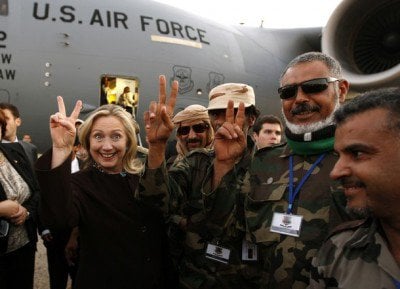

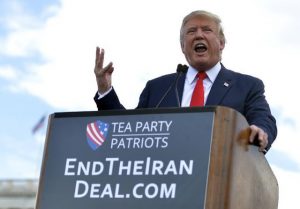
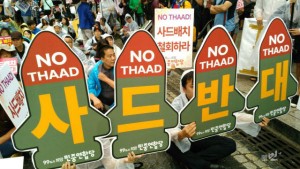

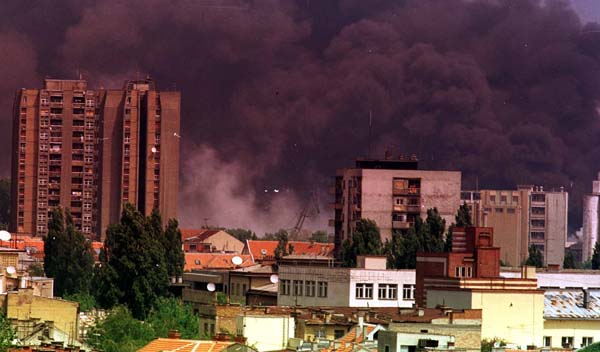





 In France, police used tear gas and truncheons, pushing demonstrators against a wall and clubbing them. Socialist Party Interior Minister Matthias Fekl denounced “intolerable violence,” condemning the victims of the police brutality, not the cops who inflicted it.
In France, police used tear gas and truncheons, pushing demonstrators against a wall and clubbing them. Socialist Party Interior Minister Matthias Fekl denounced “intolerable violence,” condemning the victims of the police brutality, not the cops who inflicted it.


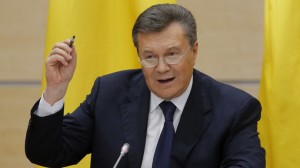
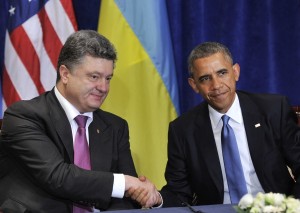

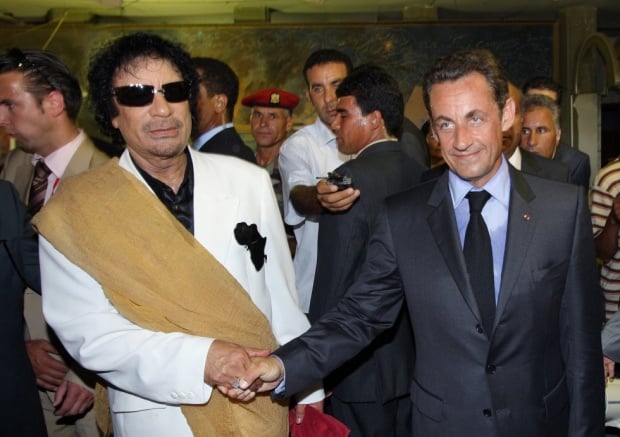

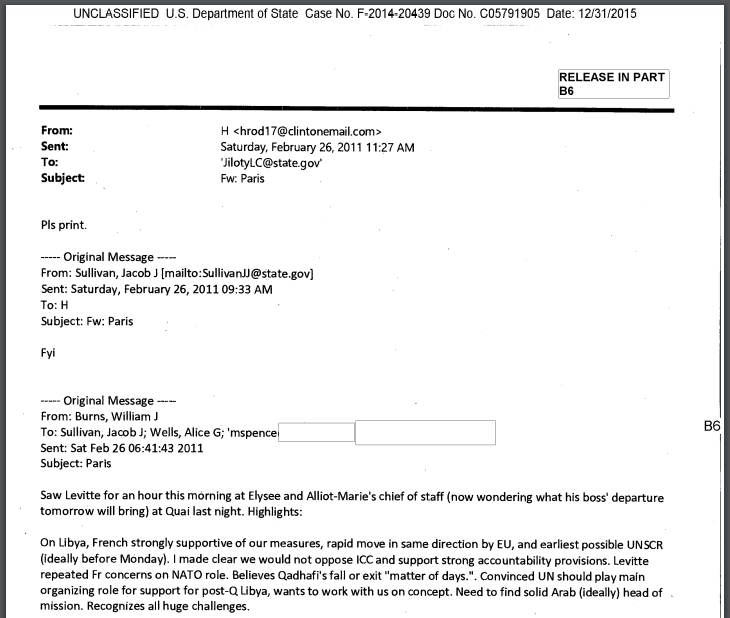
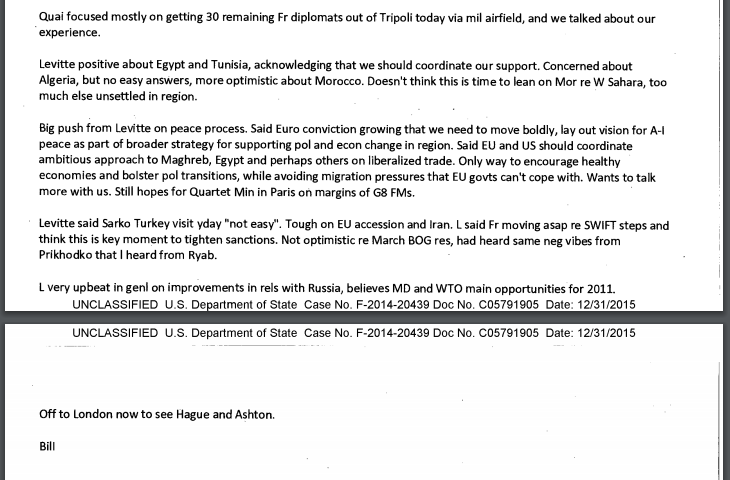




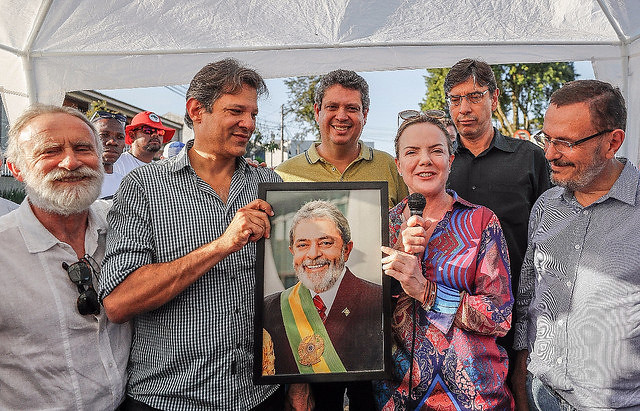

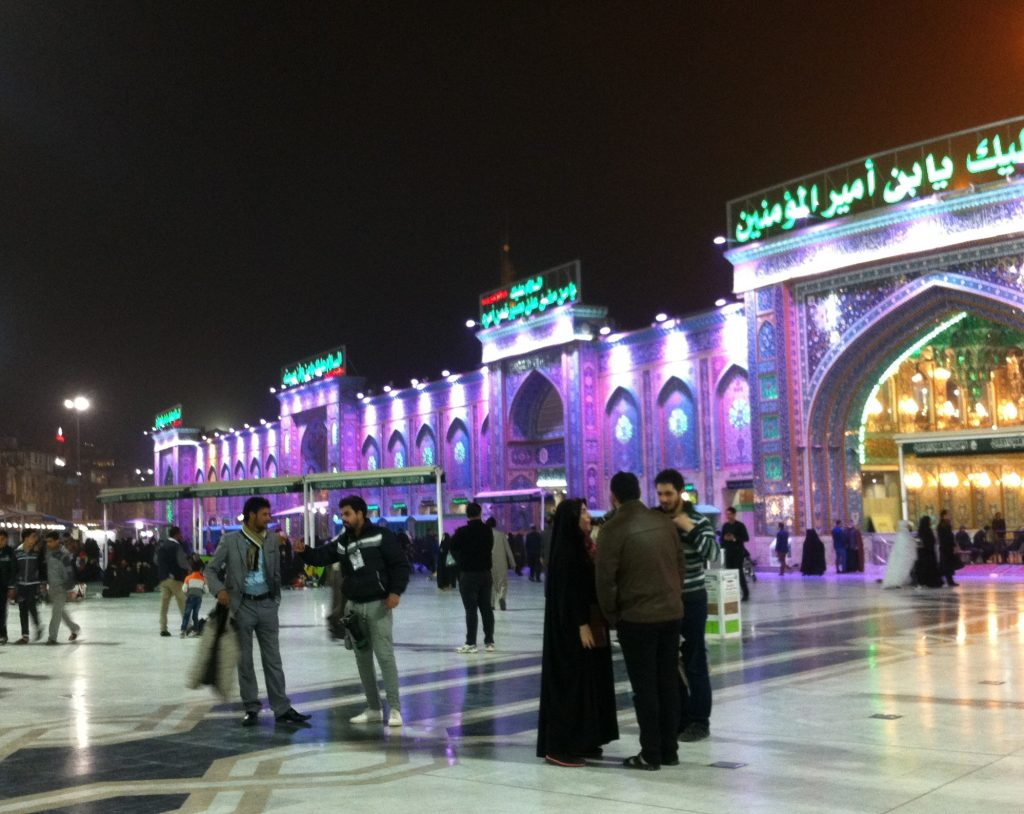



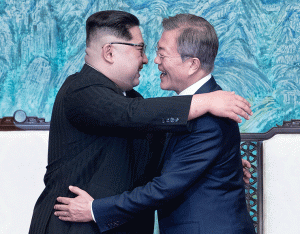










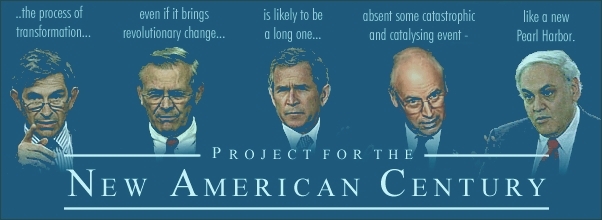
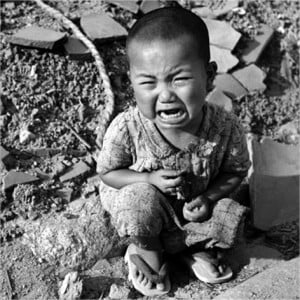








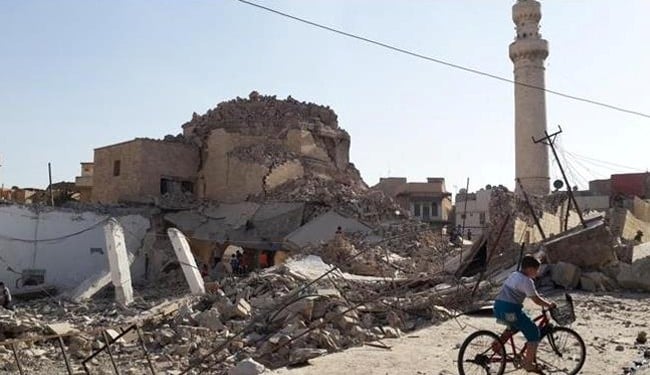
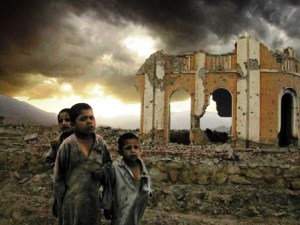



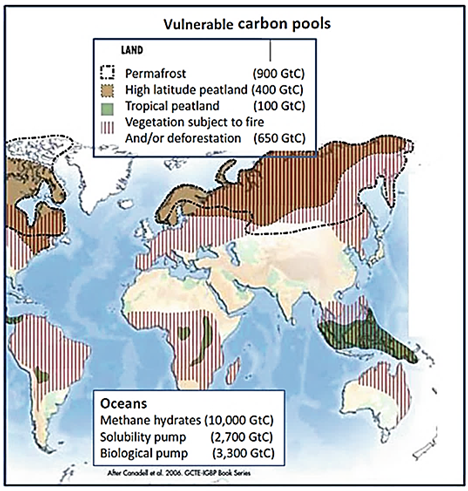

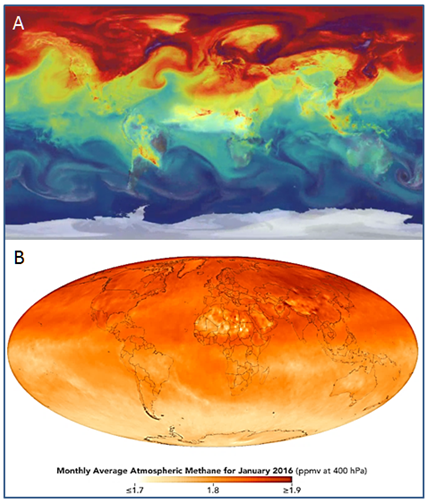
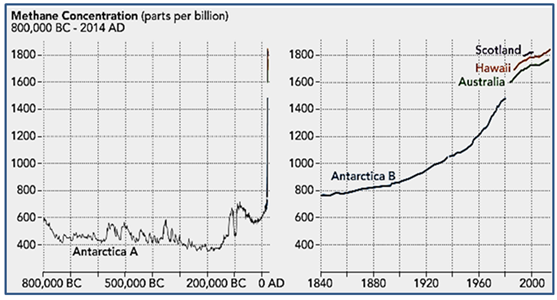

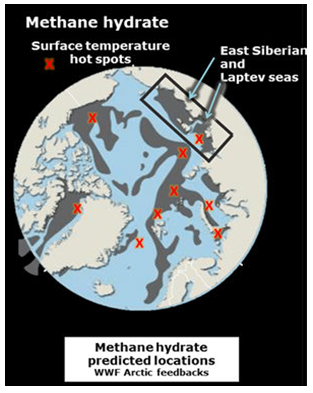



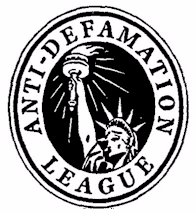





 Smitten Gate
Smitten Gate The follow up interview is with English-Australian author George Grundy. Grundy’s book,
The follow up interview is with English-Australian author George Grundy. Grundy’s book, 





























